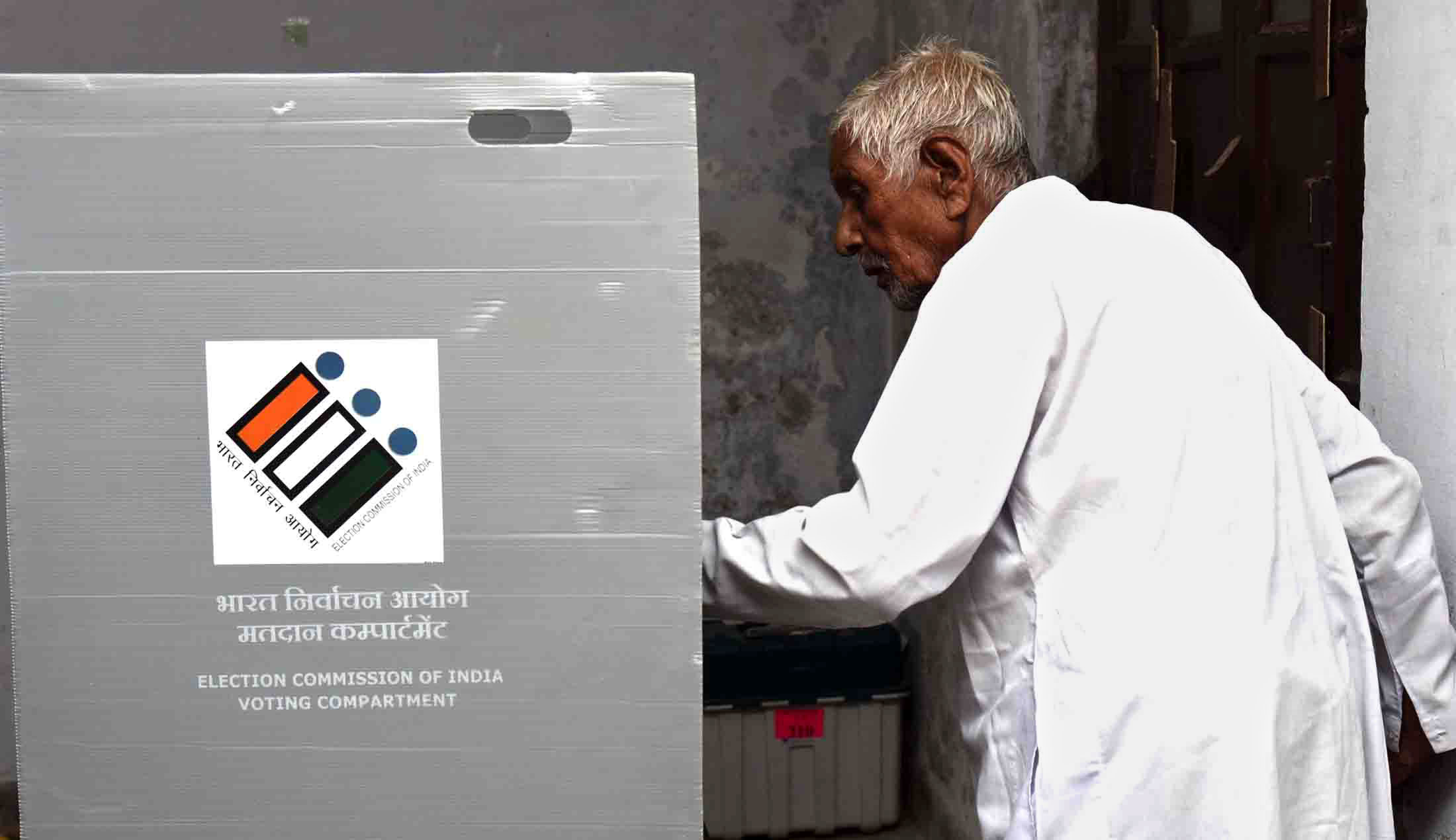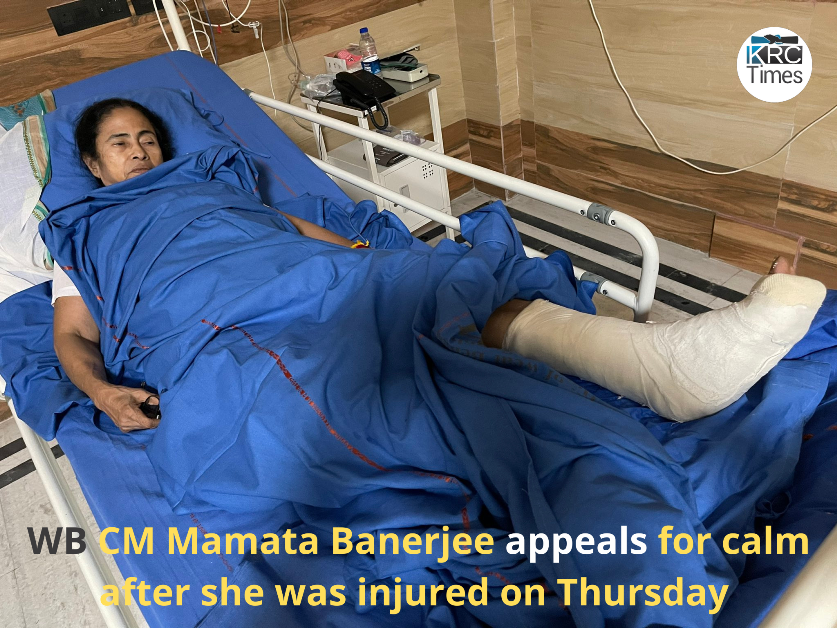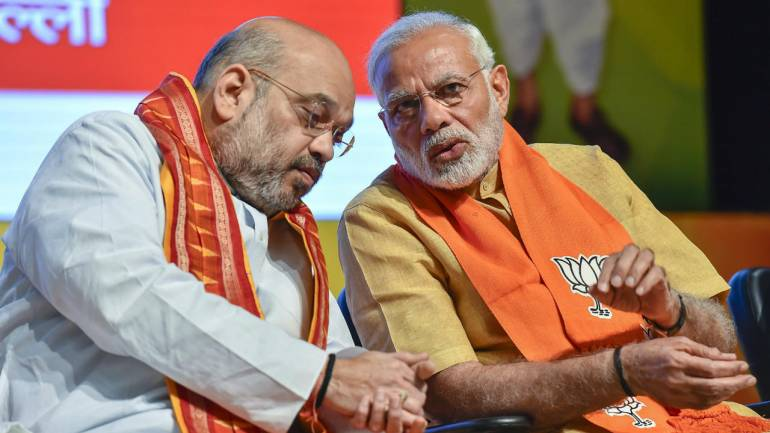And what more surprising? Mr Modi for the first time, ever since Mr Rahul Gandhi’s Adani-Ambani diatribe, broke his silence, launched a counter-offensive, linking the name of the two industrialists with Mr Gandhi, as the third phase of low polling ended
 KRC TIMES Desk
KRC TIMES Desk

Anil Anand
Even as the -7-phased Lok Sabha election could enter its middle phase, with focus rivetted on Narendra Modi-led BJP under the glare of “ab ki baar, 400 parr”, it has become the electoral battle of persistence versus the course correction. At the end of the two phases of polling the BJP clearly takes the cake for changing course midstream, shifting gears and taking recourse to its favourite agenda of communal polarisation.
And what more surprising? Mr Modi for the first time, ever since Mr Rahul Gandhi’s Adani-Ambani diatribe, broke his silence, launched a counter-offensive, linking the name of the two industrialists with Mr Gandhi, as the third phase of low polling ended. He alleged Mr Gandhi has gone silent on the Adani-Ambani tirade smacking of a deal having been struck.
The voter turnout during the first three-phases of election seemed to have an unnerving effect on the BJP. In the first phase the turnout declined by about four per cent. It came down by two per cent in the second phase, with a similar dimension in the third phase. It looked as if the low polling has taken the wind out of the BJP sails and in the mid-course “ab ki baar, 400 paar” slogan forcefully propagated by Mr Modi and the party’s poll machinery has been lost somewhere in the maze created by Congress’s persistence with targeting his Government’s policies and ideological beliefs such as the RSS view on reservations.
A new dimension has been added to “ab ki baar, 400 paar” slogan at the end of the third phase. “This is needed to prevent Congress from opening the Babri-lock on the Ram Temple,” Mr Modi said to counter the criticism that the slogan had been aimed at securing absolute majority to change the constitution.
These are the mid-course corrections. Such corrections are interesting, baffling and surprising. Why so?
Immediately after the end of two-phases of election BJP president J P Nadda propelled into action. He summoned a meeting to review the voter turnout and possible causes behind lack of interest among the voters despite a high-octane campaign and series of “accomplishments” and promises held out by none other than Mr Modi himself as his “guarantees”. This did not show much impact in the subsequent phase as well.
Does the low polling reflect a lack of confidence either in the BJP leadership or the policies of the party?
Historically, the issue of low turnout of voters has been a factor that has generated interest from time to time. It has impelled observers and political pundits to undertake serious analysis. So, in the backdrop of hullaballoo generated by the initial low polling in the 2024 Lok Sabha elections, the BJP’s concern has to be looked into historically.
How had low turnout affected the ruling dispensations in the past?
Taking count of the six elections since 1952 when low turnout of votes was registered. The incumbent Governments had lost four out of six times. Interestingly, of the five times the BJP had formed a Government, in 1996, 1998, 1999, 2014 and 2019, the increase in voter turnout was registered four times, and had declined only in 1999. However, 2024 is entirely a different ballgame with a hardcore poll tactician Mr Modi at the helm with former Congress president Mr Rahul Gandhi persistent in taking him on.
This should give BJP strategists some mixed feelings. As they leave nothing to chance, perhaps Mr Modi and his team felt the need for a changed strategy and re-fixing the issues. The casualty certainly was “ab ki baar, 400 paar”. The slogan went missing from his poll speeches and the list of guarantees.
What are the reasons behind the BJP strategists becoming cautious? What message do they read in the low turnout of voters? Did it go against the party?
Yes, they did become cautious and rightly too as Mr Modi has laid very high personal stakes to this electoral battle. Securing an electoral victory to have a third successive term as Prime Minister and set a record of sorts, is his dream.
From the manner in which the party shifted gear from issues of Modi Government’s cherished “achievements” such as abrogation of Article 370 and construction of Ram Temple, which failed to generate desirable traction in the public mind during the first two phases of polling, to strengthening its core based on Hindutva agenda, laid the charter for the coming phases.
All efforts of the Congress-led opposition to corner Mr Modi during the 2014 and 2019 outings levelling all kinds of charges, had miserably failed. Nothing stuck on his sleeves and the public confidence in him gave the BJP an unassailable upper edge.
The 2024 seems to be different. The issue of electoral bonds, after the Supreme Court declared it unconstitutional and forced the State Bank of India to release the list of donors, and more so Mr Gandhi’s full-throated charge on the intent behind Mr Modi’s “ab ke baar, 400 paar” to change the constitution and do away with reservations, seemed to have caught the public imagination. Mr Gandhi succeeded in making “saving the constitution and reservation” an effective poll issue. The result was the rattling effect it had on BJP.
Why the need for BJP to charge its Hindutva core?
The need has arisen, post- second phase polling, that created doubt in the minds of certain sections of the BJP about the efficacy of two core slogans- “Mission 400 and Aayega To Modi Hi”. A deepening feeling was that these slogans have perhaps made cadres and supporters of BJP complacent. As a result, the low voter turnout and the need to rework the strategy and raking up new issues to re-energise them.
The fact remains that the BJP’s hardcore ideological voter forms the very foundation of its support base. The party could not have afforded erosion in this support base. It was to overcome this that the party led by Mr Modi and ably supported by the machinery down below, shifted to the hardcore polarising issues with Election Commission becoming a mute spectator.
Bereft of any other issue and with “Modi’s guarantees” also not giving desired results in the first two phases of election to attract voters to the polling booths, ostensibly, it became necessary for the BJP strategists to raise interest and enthusiasm level of this vote bank before it enters important phases of election from here onwards.
This has to be seen in the context of support of core Hindu voters and its net effect on poll outcome. For instance, in 2014 Lok Sabha elections, 36 per cent of Hindus voted for the BJP, which was 29 per cent vote share of its total 31 per cent votes polled.
Similarly, in the 2019 general elections, the support of BJP’s Hindu core base jumped to 44 per cent, which meant 35 per cent of its total vote share which was about 38 per cent. On a rough calculation 93 out of every 100 voters who supported the BJP in 2014 and 2019 were Hindus.
Alarmed by the low polling in the first two-phases, that smacked of decrease in Hindu votes polled, and lack of enthusiasm among BJP’s core base of supporters, a realisation, perhaps dawned, on the party strategists that the oft-repeated agenda to become “Vishwa guru”, make India the third biggest economy of the world, the bevy of welfare schemes and the “labharthi vote bank”, were proving ineffective. And the need to address the core Hindutva plank for which the natural recourse is to target the Muslim community to generate hysteria.
The nervousness was clearly writ large and was reflected in one of the most controversial election speeches made by Prime Minister Modi in Rajasthan’s Banswara. He touched a low by claiming that if Congress came to power, the party Government would “confiscate the gold collected by Hindu women and even snatch their mangalsutra and distribute it among those who have a large number of children”- an obvious reference to Muslim community whom he described as “infiltrators”.
It was a clear reflection of the fact that nervousness has set-in in the BJP camp.
Advertisement | 5E for Success






